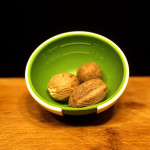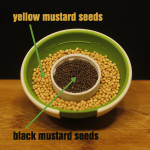This is the ultimate list of the 12 best spices of all time in the World. Keep in mind these are spices and not herbs. Spices comes come from roots, fruits, seeds, flowers or the bark of a tree while herbs come from the leaves of non woody plants. The distinction is important.
HOW WE SCORED THESE SPICES
In order to make our list these spices had to offer real tangible benefits. The spices had to be appealing to the vast majority of people so we graded them with a versatility score. We looked at their ORAC Values (anti-oxidants properties) as well as health benefits and side effects. More importantly we asked ourselves, did these spices add incredible taste and aroma to our food to make it palatable and make us feel good. We think so.
A BRIEF HISTORY OF SPICES
The search for spices was the first globalization trend. Spices were a globally traded product long before European explorers discovered these spices. Spices were and remain a hugely valuable product dating back to ancient civilization. Used to preserve food, deliver amazing health benefits and create a variety of flavors. Spices create emotion in our lives. It adds character and life. Some say that God hid the solution to all our health problems in these spices. Are we smart enough to discover the hidden secrets of these spices?
HOW TO USE SPICES
Fresh is Best – The first rule of spices is that they have to be fresh. Otherwise you lose more than 50% of their benefits. Fresh spices add true flavor. Only fresh spices deliver the hidden health benefits that lie within them.
Quality Spices – The second rule of spices is they have to be of good quality. Many spices especially ground spices are adulterated. They are mixed with fillers as illustrated in this article.
Correct Mix – We have to learn how to combine spices. Some spices mix well with each other but others do not. Cinnamon and orange mix well for example. So we have to learn this art from existing recipes and experimentation. The mixing quantity is also important. The correct amount of spices to mix is an art form and comes centuries of experience developed by our ancestors who did most of the hard work. One day we will probably have a Google app that will tell us how much spices in what quantities to use for given recipe. Until then we have to collect high quality recipes, because there are many recipes that are just mediocre or plain wrong. Like using Cassia Cinnamon instead of Ceylon Cinnamon in any Mexican recipe that calls for Ceylon Cinnamon.
HEALTH BENEFITS OF SPICES
Spices have enormous health benefits. We have listed the three most valuable Vitamins and minerals in each of these spices as well as what health benefits they can be used for.
To make health claims more realistic we used 1 teaspoon as a reasonable measure because that is the usual amount of spices in most recipes for 2-4 people. Each spice has specific benefits for different ailments. Some spices can be combined to add an even more powerful healing effect.
But using too much spices like nutmeg can be very dangerous and lead to serious mental disorders. Pregnant women for example should not consume Cinnamon because it can cause premature uterine contractions leading premature births. But taken in moderation Cinnamon, especially Ceylon Cinnamon is one of the most versatile of spices with few side effects.
THE 12 BEST SPICES OF ALL TIME
1.Cloves
 Cloves looks like a nail. It has a warm, sweet taste and an almost pungent aroma. But it is without a doubt one of the leading anti-oxidant spices. Cloves have a hard exterior but it is the oily compound inside that contains it’s nutritional benefits. Another reason why cloves should be crushed when added to cooking.
Cloves looks like a nail. It has a warm, sweet taste and an almost pungent aroma. But it is without a doubt one of the leading anti-oxidant spices. Cloves have a hard exterior but it is the oily compound inside that contains it’s nutritional benefits. Another reason why cloves should be crushed when added to cooking.
Like Cinnamon, cloves contain an active component called Eugenol which is useful as an anti-inflammatory agent. But its biggest benefit is its anti-oxidant power to help repair cell damage in your body and high levels of Manganese which is good for bone and cartilage development. Unfortunately incorporating cloves into your diet can be difficult. Adding a few cloves to rice or daily tea is an easy way. But cloves must be used in moderation and not something you can take daily. Once a week of no more than 1 tsp is probably just right.
Daily Value (DV%) in 1 tsp.: Manganese (31%), Omega 3 Fats (3.7%) Vitamin K (3.7%)
Antioxidant ORAC Value : 15,514 u mol TE/1 tsp.
Versatility Index: 5/10
Benefits: Repair cell damage, bone and cartilage development, anti-inflammatory (arthritis), intestinal gas, toothache, cough up phlegm, hernia, diarrhea, bad breadth, vomiting. :
Side effects: Serious allergic reactions, bleeding, burns mouth if taken in large doses
Recipe Ideas : Lamb Curry , Fried Rice, Clove tea
2. Ceylon Cinnamon
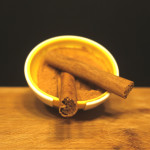 Go to any coffee shop like Starbucks you know they will have Cinnamon powder. And most people sprinkle a little on their coffee and there is a reason for it. Cinnamon is one of the most powerful anti-oxidants you can get. While North Americans are used to dangerous high Coumarin Cassia Cinnamon, quite a bit of the World uses low Coumarin Ceylon Cinnamon which won’t damage your liver.
Go to any coffee shop like Starbucks you know they will have Cinnamon powder. And most people sprinkle a little on their coffee and there is a reason for it. Cinnamon is one of the most powerful anti-oxidants you can get. While North Americans are used to dangerous high Coumarin Cassia Cinnamon, quite a bit of the World uses low Coumarin Ceylon Cinnamon which won’t damage your liver.
Ceylon Cinnamon is extremely versatile, and blends well with a huge variety of culinary creations from sweet desserts to meats, vegetables, grains and beverages. Brewed Cinnamon sticks make an amazingly refreshing tea. Cinnamon infused in mulled wine or black tea is another fabulous idea. Pound for pounds Cinnamon delivers more health benefits that any other spice. And as long you don’t exceed US department of Health guidelines of no more than 6g per day you can take Cinnamon on a daily basis with a break every 6 weeks for a week.
Only a very small percentage of people are allergic to Cinnamon, Pregnant women should not take Cinnamon because it can cause uterine contractions leading to premature birth. If you switch to Ceylon Cinnamon the liver damage from high Coumarin is not an issue and if you have a heart condition dodn’t take too much Cinnamon as it can increase heart rates.
Good Source of (1 tsp.) : Manganese (45%), Calcium (5%), Vitamin K (1.8%)
Antioxidant ORAC Value : 6571 u mol TE/1 tsp.
Versatility Index : 8/10
Benefits : Blood sugar control, food preservative, antibacterial, Candida yeast infection, stomach flu, IBS, reduces bloating and gas, improve memory and alertness, reduces irritability. Warms the body against cold chills and arthritis symptoms.
Side effects : Premature labor, high Coumarin in Cassia Cinnamon, Blood thinner, skin irritation (oil), increased body heat,
Ceylon Cinnamon Recipes: Sri Lankan Cinnamon Shrimp Curry,Cinnamon Pork Curry, Cinnamon Fried Rice
3. Black pepper
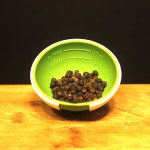 Probably the most versatile of spices, black pepper is an Asian spice that originated in India. Go to any restaurant in the World and you will get pepper no matter how bad the food is, The spicy kick of pepper will turn any bland dish into something palatable, even for people used to bland food.
Probably the most versatile of spices, black pepper is an Asian spice that originated in India. Go to any restaurant in the World and you will get pepper no matter how bad the food is, The spicy kick of pepper will turn any bland dish into something palatable, even for people used to bland food.
The beauty of black pepper is that it is so versatile, can be consumed every day and very good for digestion. For restaurateurs it is an insurance policy against bad food because pepper prevents intestinal gas build up that can make customers feel very uncomfortable.
Good Source of (1 tsp): Manganese (6%), Vitamin K (4.3%), Iron (3.3%),
Antioxidant ORAC Value : 1702>u mol TE/1 tsp.
Versatility Index:10/10
Benefits: Digestion, prevent intestinal gas, anti-bacterial, antioxidant, promotes sweating and urination, breaks down fatty cells
Side Effect : Respiratory irritation, edema, respiratory arrest, severe anoxia
Pepper Recipes: Chinese chicken, Prawns with Black Pepper
4. Turmeric
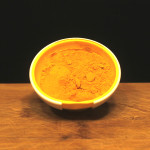 A huge staple of Indian cooking, Turmeric is known as a powerful disinfectant (antibacterial) and a leading anti-oxidant especially useful again cancers like breast cancer. On its own the taste borders on the bitter and pungent but when combined with food it adds a subtle refinement to any dish. Turmeric adds bright color and an earthy flavor to many dishes.
A huge staple of Indian cooking, Turmeric is known as a powerful disinfectant (antibacterial) and a leading anti-oxidant especially useful again cancers like breast cancer. On its own the taste borders on the bitter and pungent but when combined with food it adds a subtle refinement to any dish. Turmeric adds bright color and an earthy flavor to many dishes.
Add ¼ teaspoon when you cook rice. Add to curries and even meats for both color and flavor complexity. Some people even a drink a cup in the morning but we are warned it stains so don’t use too much.
The recommended safe doses per day is 2g (0.4 tsp) of Turmeric. Turmeric is one of those spices which is safe for daily consumption. If you exceed the daily limits then you might get allergic reactions, gallbladder problems, liver problems and excessive bleeding. Use in moderation and you benefit from its many health properties.
Good Source of (1 tsp) : Manganese (8.5%), Iron (5%),Vitamin B6 (2%)
Antioxidant ORAC Value - 1 tsp. : 1353 u mol TE/1 tsp
Versatility Index : 7/10
Benefits : Reduced blood sugar levels, disinfect cuts and burns, cancer (breast, prostate and lung), prevent melanoma, cystic fibrosis, Rheumatoid Arthritis, Anti-Inflammatory, inflammatory bowel disease (Crohn’s and ulcerative colitis), Childhood Leukemia, Improved Liver Function, Cholesterol, Cardiovascular Protection
Side Effects : Turmeric can make gallbladder and Gastro esophageal reflux disease (GERD) problems worse, slows blood clotting. Do not take during pregnancy as it stimulates the uterus
Recipes Ideas : Fried Rice , Red Lentils, Omelet, Fish Curry
5. Ginger
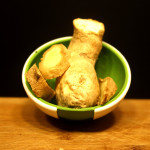 The tangy freshness, warmth, light spiciness, and mellow sweetness of ginger works well with a range of dishes, from sweet to savory. Ginger can take center stage or be used in moderation to create more complex flavors.
The tangy freshness, warmth, light spiciness, and mellow sweetness of ginger works well with a range of dishes, from sweet to savory. Ginger can take center stage or be used in moderation to create more complex flavors.
Apparently Ginger induces cell death in ovarian cancer cells. And while it has very little nutritional value, its magic lies in its ability to create very complex flavor profiles. Ginger is really great with lamb, pork and chicken. Long prized in Chinese, Indian and Middle eastern cultures for its medical value, ginger is renowned for its ability to provide gastrointestinal relief especially motion sickness, dizziness, nausea, vomiting and cold sweating. It is also has strong anti-inflammatory properties, especially for aching bones.
The side effects of Ginger usually happens only if you eat too much of it. Moderation is the key. So while ginger calms the stomach, take too much and it makes it worse and gives you gas. Those who are taking high blood pressure medicine or diabetes medicine should not take ginger because it lowers blood pressure and blood sugar levels. Then again wouldn’t it be better to take something natural and avoid the expensive medication? You decide.
Daily Value (DV%) in 1 tsp : N/A
Antioxidant ORAC Value - 1 tsp. : 1952 u mol TE/ tsp.
Versatility Score : 8/10
Benefits : gastrointestinal relief, motion sickness, dizziness, nauseas, vomiting and cold sweating, coughs, colds, headaches, ovarian and colorectal cancer, migraine, muscle and joint injuries. Lowers bloody levels. blood pressure, gas, bloating heartburn,
Side effects : conflicts with blood pressure and diabetes medication
Recipe Ideas : Moroccan Lamb, Stir Fry Ginger Beef, Spices Potato Cakes
6.Garlic
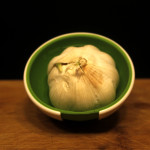 Probably the most versatile of spices, garlic mixes with virtually anything to create incredible flavor. Any type of meat, vegetable, grain. Wow! Virtually every culture in the World uses garlic in their cooking. Without it our food would be very dull indeed.
Probably the most versatile of spices, garlic mixes with virtually anything to create incredible flavor. Any type of meat, vegetable, grain. Wow! Virtually every culture in the World uses garlic in their cooking. Without it our food would be very dull indeed.
Garlic is great for controlling blood pressure, fresh garlic, preferably added near the end of your cooking is best to maintain its nutritional benefits. Apparently selenium in garlic can become an important part of our body’s antioxidant system. And the Sulpher in it helps to control blood clots from becoming an issue and prevents blood vessels from getting blocked.
Daily Value (DV%) in 1 tsp (5 grams) : Manganese (7.5%), Vitamin B6 (5.5%) Vitamin C (4.6%)
Antioxidant ORAC Value - 1 tsp. : 285 u mol TE/ tsp
Versatility Score : 10/10
Benefits : Blood pressure reduction, control blood clots, reduce hardening of the arteries Colon cancer, rectal cancer, and stomach cancer, Fungal infections
Side Effects : Bad breadth, a burning sensation in the mouth or stomach, heartburn, gas, nausea, vomiting, body odor, and diarrhea.
Recipe Ideas : Garlic chicken, 10 best garlic recipes, garlic mashed potatoes
7. Nutmeg
Of all the spices, nutmeg is one spice you must take with extreme caution. At low doses nutmeg is unlikely to have an effect but take more than 1-2 tablespoons (we would stick to no more than 1 teaspoon), it can affect your central nervous system causing hallucinations, delusions and personality disorders. Read this ABC news article.
But nutmeg is a fairly good anti-oxidant, helping to keep the brain sharp and is great for skin, making it look brighter, clearer and reducing scars. It is also a good digestive which is why it is often used in soups and stews. And for joint pain. In nontraditional medicine, nutmeg is used to increase blood circulation and treat kidney infections. If you are pregnant do not take anything with nutmeg. So treat nutmeg very carefully and use in extreme moderation.
One thing you probably did not know is that Nutmeg and Mace are siblings. They both come from the nutmeg tree. The nutmeg is the oval-shaped nut, and mace is the bright red webbing that surrounds the nut. Mace has a strong pungent aroma and a spicy taste while the nutmeg nut tastes and smells like the combination of Cinnamon and pepper, more delicate and refined. Nutmeg is usually grated just prior to use.
Daily Value (DV%) in 1 tsp : Manganese (6.3%) Copper (5.7%)
Antioxidant ORAC Value : 3482 u mol TE/1 tsp.
Versatility Score : 3/10
Benefits : Great for skin, improves mental alertness, improves digestion, kidney infections
Side Effects : Nutmeg is UNSAFE in doses larger than amounts found in foods. In pregnant women, they may cause miscarriages or birth defects.
Recipe Ideas : Mulled Wine, Butternut Squash , Roasted Cauliflower, Nutmeg chicken
8. Cumin
 Extremely popular in Indian and Middle Eastern cooking (native to Egypt) Cumin is gaining traction in the Western World. Cumin has a peppery earthy like taste with notes of citrus and a slight bitterness. It comes in seed form or ground. Most people prefer to use it in ground form because the seeds are not palatable. When mixed with food Cumin adds an remarkable depth of flavor but don’t over do. Just a little is fine.
Extremely popular in Indian and Middle Eastern cooking (native to Egypt) Cumin is gaining traction in the Western World. Cumin has a peppery earthy like taste with notes of citrus and a slight bitterness. It comes in seed form or ground. Most people prefer to use it in ground form because the seeds are not palatable. When mixed with food Cumin adds an remarkable depth of flavor but don’t over do. Just a little is fine.
Cumin is known for improving digestion, cancer prevention, and diabetes, piles, insomnia, asthma and bronchitis. Because of its high iron content Cumin is great to treat anemia. If you a pregnant avoid eating cumin to be on the safe side but if you are lactating, then Cumin is a good choice because of the high calcium levels. The side effects of Cumin seems very small and usually related to lowering your blood sugar levels which is only a bad thing if you are already on blood sugar lowering medication or going for surgery.
Daily Value (DV%) in 1 tsp : Iron (7.6%), Manganese (3.5%) Calcium (3.9%)
Antioxidant ORAC Value : 2,518 u mol TE/1 tsp.
Versatility Score : 7/10
Benefits : Improved digestion and reducing gas, lower blood sugar levels, cancer, piles ,insomnia, asthma, bronchitis
Side Effects : May lower blood sugar levels too much, especially during surgery.
Recipe Ideas : Roasted Egg plant , Cumin Chili, Sri Lankan Red Lentils
9. Mustard Seed
There are three main types of mustard seeds which are black, white and yellow mustard seeds. Black mustard seeds have a strong pungent taste. So called white mustard seeds, which is yellow in color, is the mildest and used to make American yellow mustard that is ubiquitous at any restaurant. Brown mustard, which is dark yellow in color, has a pungent acrid taste and used to make Dijon mustard.
While we can’t find the ORAC value for black or brown mustard seeds, we would think their ORAC valus are probably very similar if not higher to yellow mustard seed. Using mustard in cooking of course is complicated but we found an Indian potato recipes that uses all three mustard seeds. It is said that the best mustard should contain all three mustard seed varieties which may have merit, certainly from a taste perspective.. In South East Asia black mustard seeds are often used whole by quickly frying in oil until they pop to impart a flavor to the oil.
The chief benefit of Mustard seeds appear to b it’s cancer fighting properties, especially digestive tract cancers like colorectal cancers. Because of its high selenium content it is apparently good for asthma and rheumatoid arthritis.
Daily Value (DV%) in 1 tsp : Selenium (5.8%), Manganese (2.5%, Omega 3 fats (2.25%)
Antioxidant ORAC Value (Yellow Mustard Seed) : 1462 u mol TE/1 tsp.
Versatility score : 5/10
Benefits : Cancer fighter, asthma, rheumatoid arthritis.
Side Effects : Do not use amounts if you are pregnant. There is some evidence it might start your menstrual period and cause a miscarriage.
Recipe Ideas : Indian Potatoes, Salmon with Dijon mustard , Tangy Ranch chicken
10. Chili
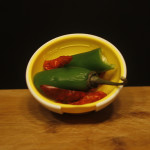 While not for everyone and a spice that can make you sweat, bring tears to your eyes or cause painful stomach ailments, chili has gained a following even in places where it is hardly used. The thing is, it a fairly good anti-oxidant, helps preserve food and adds flavor to food. It also comes in many varieties with the Habenero Pepper scoring the maximum 570,000 Scoville Heat units. You don’t have to use lots of it. Just a very tiny bit will add flavor without making it too hot at all.
While not for everyone and a spice that can make you sweat, bring tears to your eyes or cause painful stomach ailments, chili has gained a following even in places where it is hardly used. The thing is, it a fairly good anti-oxidant, helps preserve food and adds flavor to food. It also comes in many varieties with the Habenero Pepper scoring the maximum 570,000 Scoville Heat units. You don’t have to use lots of it. Just a very tiny bit will add flavor without making it too hot at all.
Daily Value (DV%) in 1 tsp : Vitamin A (4%)
Antioxidant ORAC Value : 1,181 u mol TE/1 tsp.
Versatility Score : 6/10
Benefits : Fight inflammation, Natural pain relief, lowers rate of heart attacks, clear congestion, boosts immunity, stops spread of prostate cancer, lose weight, lower diabetes risk,
Side Effects : Irritates the eyes and skin, upset the stomach, cause diarrhea and or bleeding. Nasal inhalation can cause burning pain, sneezing, watery eyes, and runny nose.
Recipe Ideas: Red lentils, Pork Curry,
11. Coriander/Cilantro
Coriander and Cilantro are essentially the same thing. They both come from the same plant but the leaves are called Cilantro and the dried seeds are known as Coriander. However it is the dried seeds called Coriander that is the most versatile even though the fresh Cilantro is used for garnish or to make Salsa on a huge scale. Coriander has a much longer shelf obviously which makes it suitable for a huge range of Asian curries, where it’s use is ubiquitous.
Daily Value (DV%) in 1 tsp : Fiber (4.2%) Calcium 1.4%)
Antioxidant ORAC Value : 257 u mol TE/1 tsp.
Versatility Index : 8/10
Benefits : Blood Sugar control, reduce Cholesterol and decrease free radical production
Side Effects : allergic reactions, skin sensitivity in sun and skin cancer, skin darkening with high doses of Coriander
Recipe Ideas : Carrot & Coriander Soup, Coriander Lemon Chicken, Coriander Noodle Soup
12. Cardamom
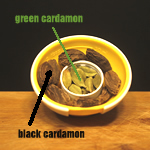 Cardamom Pods are a typically Indian and Sri Lankan spice that is not well known in the Western World. But with globalization people all over the World are beginning to appreciate it especially for meats like lamb. However it can be used in variety of recipes including Cardamom rolls, tea, ice cream lemonade, mulled wine and much more. The oldest and third most expensive spice in the World Cardamom is highly aromatic has an enticing spicy sweet flavor with a slight astringent tang to it. A very interesting flavour.
Cardamom Pods are a typically Indian and Sri Lankan spice that is not well known in the Western World. But with globalization people all over the World are beginning to appreciate it especially for meats like lamb. However it can be used in variety of recipes including Cardamom rolls, tea, ice cream lemonade, mulled wine and much more. The oldest and third most expensive spice in the World Cardamom is highly aromatic has an enticing spicy sweet flavor with a slight astringent tang to it. A very interesting flavour.
Because it is so powerful a little goes a long way. Overdo it and it will make any dish too hot and bitter but get it right, the aroma and taste it adds is just exotic. It comes in two varieties, black and green. Black Cardamom has a lovely smokey flavor while the green Cardamom has a clove menthol taste and is far more expensive and stronger. Black Cardamom is better for meat dishes especially savory dishes, while green cardamoms are better for sweet recipes.
It can be bought as pods, as seeds or ground but the ground seeds soon lose their flavour so it’s best to buy the pods and grind the seeds yourself using a pestle and mortar. For recipes requiring whole cardamom pods, a generally accepted equivalent is 10 pods equals 1½ teaspoons of ground cardamom.
While Cardamom is not a great antioxidant or a source of vitamins and minerals it does have high levels of Manganese which we know is great for bone and cartilage development.
Daily Value (DV%) in 1 tsp : Manganese (28%), Iron (2%), Vitamon C (1%)
Antioxidant ORAC Value : 138 u mol TE/1 tsp.
Versatility Index : 5/10
Benefits : Digestion, stomach cramps, improve blood circulation, improves appetite, acid relief, sore throats, respiratory allergies, mouth ulcers
Side Effects : abdominal pain for patients with gallbladder stones, allergies including breathing difficulties, chest discomfort, hives or swelling of the skin
Recipe Ideas : Lamb curry, Malay Lamb Korma, Huffington Post Cardamom Recipes (26), Mulled Wine, Hot Toddy
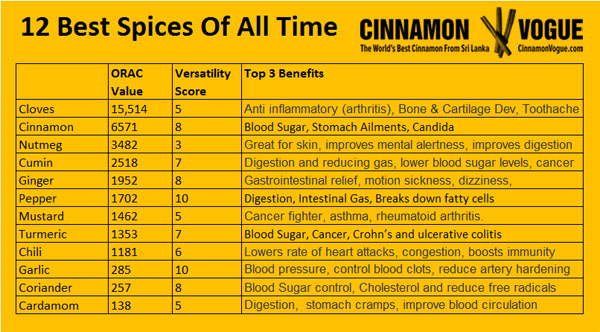
Sources
How the Search for Flavors Influenced Our World
Orac Values
http://www.whfoods.com/genpage.php?tname=foodspice&dbid=78
http://www.care2.com/greenliving/8-amazing-health-benefits-of-nutmeg.html


